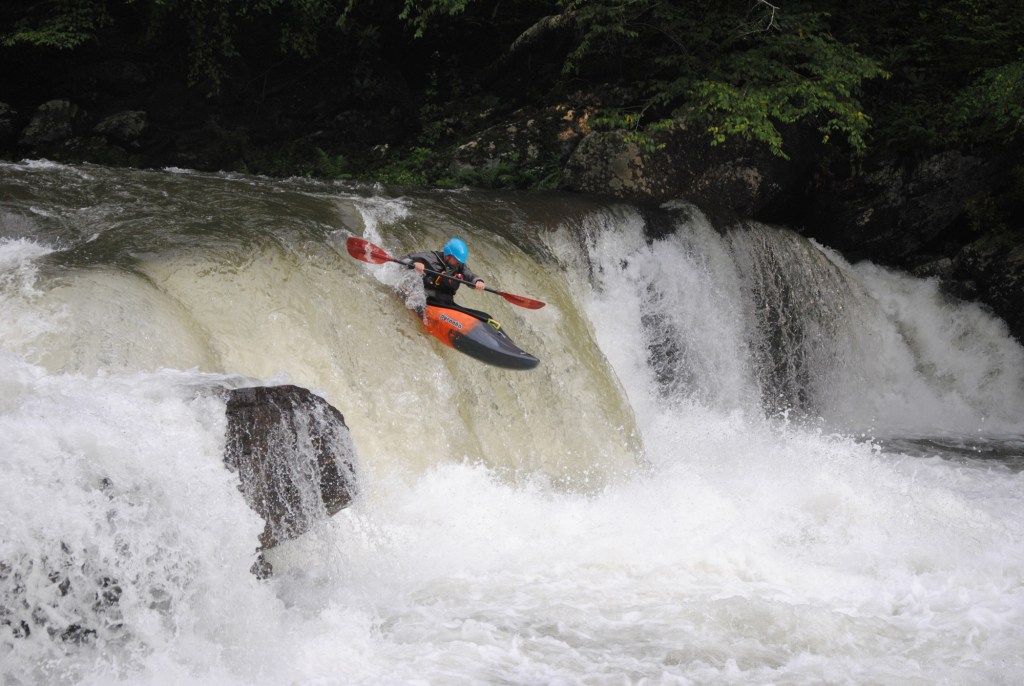As the days grow longer, boaters in the American Southeast are gearing up for whitewater season, the majority of which is dictated by the timed release of hydroelectric dams. Experts say 2019 looks to be another water-soaked year, as American Whitewater (AW), a nonprofit that advocates for boater access, negotiated several recreational releases this spring and fall.
Thanks to AW’s efforts, power companies are turning on the water in North Carolina’s Cheoah, Upper Nantahala, and West Fork of the Tuckasegee rivers, all of which are predominantly left dry by hydroelectric projects. The New River Dries, in West Virginia, will also see recreational releases for the first time this year.
Hydroelectric dams have been a part of America’s energy portfolio for more than a century. Today, there are 2,198 dams in 48 different states, delivering 103GW, or nearly 7 percent of the nation’s power, each year. Rivers in the Southern Appalachians, the mountains that stretch from Alabama into West Virginia, were largely harnessed by hydroelectric dams as part of Franklin D. Roosevelt’s New Deal in the 1930s. Today, energy companies create power by collecting and then releasing river water from dams, bringing energy to customers throughout the region.
In some cases, energy companies route water around the rivers to produce energy more efficiently, leaving riverbeds dry. Most large rivers in the South are dammed, according to Kevin Colburn, national stewardship director for American Whitewater. For instance, Colburn says, there are 400 significant dams in Western North Carolina alone, and only four Wild and Scenic Rivers. For the last 20 years, American Whitewater has negotiated recreational water releases of certain rivers, giving boaters the rare chance to paddle corridors that would otherwise be dry, or have water levels too low to navigate.
“There are rivers that have been dewatered for a century or more until we started working on their dam re-licenses,” said Colburn. “We’ve been able to bring rivers back to life, even if it’s just for a handful of days a year.”

Photo Credit: Kevin Colburn
According to Colburn, American Whitewater focuses its negotiations on rivers that offer a “high-quality” whitewater experience. In the last decade, the organization has been able to bring water back into the Cheoah River, which sat dry for 77 years until 2005, as well as the West Fork of the Tuckasegee River. The Cheoah offers a challenging Class IV to Class V experience for kayakers and commercial rafters, and the West Fork of the Tuck offers a challenging, steep creek for experienced kayakers.
“The majority of our guests that run the Cheoah don’t realize that just 10 years ago, the river was dry,” said Jan Wojtasinski, vice president of marketing for the Nantahala Outdoor Center. “And now we get to paddle it several days a year. That’s so cool.”
Boaters can advocate for recreational releases only when the power companies have to reapply for federal and state permits for each dam, a process that occurs every 30 to 50 years. American Whitewater negotiated releases of the West Fork of the Tuck in 2003, and the Cheoah in 2005, securing a certain number of releases each year on each river. The power company then announces a schedule of releases adhering to those negotiations at the beginning of each year.
According to Colburn, American Whitewater negotiates with the power company that owns the dam, as well as local stakeholders and federal and state agents. Depending on the river, other nonprofits may join American Whitewater in advocating for releases, but oftentimes, it’s just AW wrestling with the power companies. The results of those negotiations last decades into the future, until the dam’s licenses need to be renewed.
“It’s pretty heady to work on a project that will affect these rivers for 50 years,” Colburn said. “It’s so profound when I go to a river and see the water come on and know that these releases will be there for the rest of my life at this point.”
The negotiation process for each dam can take several years, according to Colburn, as AW and state and federal agencies coordinate a series of water flows and environmental studies that consider the effect of various release levels on the rivers’ species and ecosystem. In addition to the series of releases that AW secured for the Cheoah and West Fork of the Tuck, boaters will be able to enjoy the first-ever releases on the New River Dries, the uppermost section of the New River in West Virginia.
“That is such a cool stretch of river,” said Linc Stallings, a veteran raft guide who leads clients down rivers throughout the Southeast. “You’re basically paddling through bedrock, at the beginning of the New River Gorge, with sheer walls rising 200 feet overhead. It’s gonna be a great addition to the South’s whitewater portfolio.”
American Whitewater also secured recreational releases in 2006 on the Catawba River, in South Carolina, where a particularly steep section of river culminates in a series of drops known as Great Falls. After more than a decade of delays, recreational releases will begin there in 2022.
To see a full schedule of recreational releases for 2019, visit American Whitewater.
